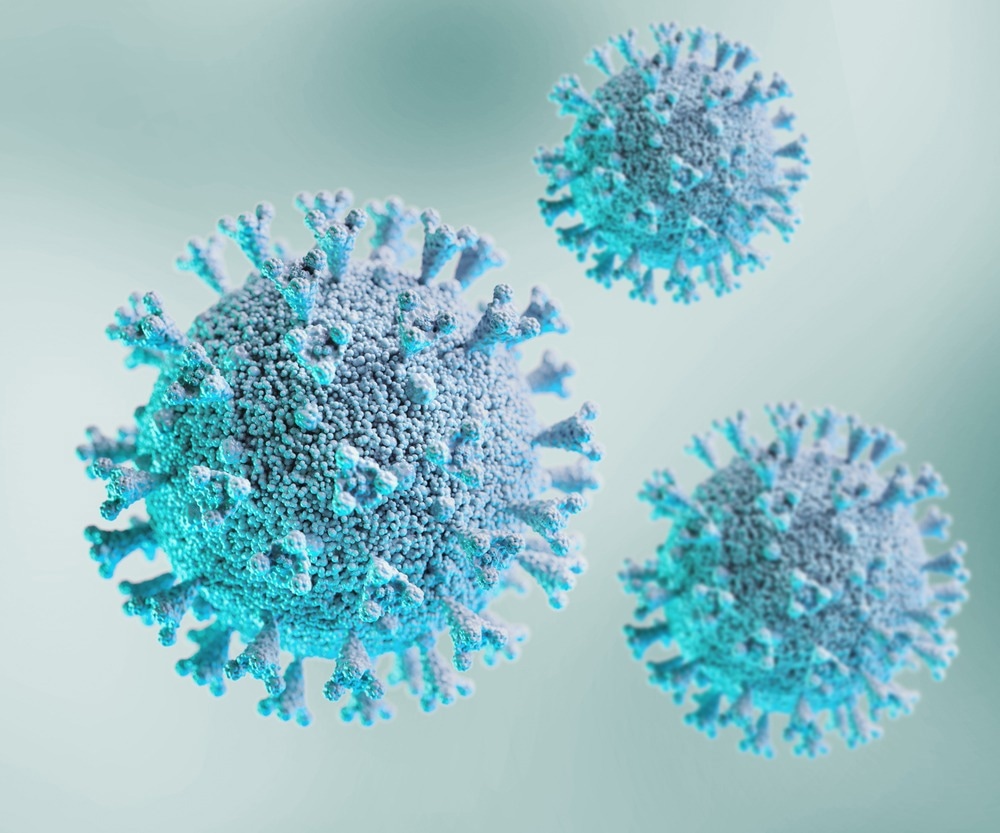A recent study posted to bioRxiv* identified inhibitors for severe acute respiratory syndrome coronavirus 2 (SARS-CoV-2) non-structural protein 14 (Nsp14).
 Study: Structure-based discovery of inhibitors of the SARS-CoV-2 Nsp14 N7-methyltransferase. Image Credit: MaciejForyszewski/Shutterstock
Study: Structure-based discovery of inhibitors of the SARS-CoV-2 Nsp14 N7-methyltransferase. Image Credit: MaciejForyszewski/Shutterstock

 *Important notice: bioRxiv publishes preliminary scientific reports that are not peer-reviewed and, therefore, should not be regarded as conclusive, guide clinical practice/health-related behavior, or treated as established information.
*Important notice: bioRxiv publishes preliminary scientific reports that are not peer-reviewed and, therefore, should not be regarded as conclusive, guide clinical practice/health-related behavior, or treated as established information.
Background
Viral proteins like the papain-like protease and methyltransferases such as the Nsp14 are crucial for SARS-CoV-2 virulence and seem attractive candidates for antiviral drug discovery. The S-adenosine methionine (SAM)-dependent methyltransferase, Nsp14, catalyzes methylation of terminal guanine of viral RNA, resulting in a cap-0 structure.
It is subsequently methylated by Nsp10-Nsp16 to form cap-1. This capping of viral RNA helps evade the host’s innate immune responses by mimicking the post-transcriptional modification of eukaryotes. Nsp14 deletion abolishes virulence, underpinning its potential as a drug target. SAM-dependent methyltransferases have been long explored in cancer chemotherapy.
Several inhibitory analogs (of SAM) have been reported, and their crystal structures complexed with Nsp14 have been resolved. Although SAM-like inhibitors are potent, many are charged and large, which may reduce bioavailability. Moreover, SAM analogs can likely act against other methyltransferases, making them problematic as novel antiviral leads.
The study and findings
In the present study, researchers explored novel inhibitors for Nsp14 with better properties than SAM analogs. They performed a docking screen with more than 680 million lead-like molecules in the ZINC20 library against the SAM site of SARS-CoV-1 Nsp14 since the structure of SARS-CoV-2 Nsp14 was unavailable when the team initiated the project. Those similar to SAM analogs in topology were excluded.
The remaining compounds were clustered according to the extended connectivity fingerprint, up to four bonds (ECFP4), prioritizing interactions with specific residues. The best-scoring 5000 molecules were visually assessed for interactions and unfavorable characteristics. Ninety-three molecules were de novo synthesized and tested for inhibitory activity.
One molecule was identified – ZINC475239213 (‘9213), with a half-maximal inhibitory concentration (IC50) of 20 μM. The docking screen was repeated once the structure of the SARS-CoV-2 Nsp10-Nsp14 complex was available, using the larger ZINC22 library comprising over a billion molecules. Two molecules were identified - ZINC730084824 (‘4824) and ZINC61142882 (‘2882), with IC50 values of 43 μM and 6 μM, respectively.
Next, the researchers explored analogs of docking hits among the molecules enumerated in a REAL database version to improve their affinity, using similarity and sub-structure searches in the Arthor and SmallWorld search engines. Conservative analogs were prioritized and docked into the SAM pocket of Nsp14. Consequently, 36, 20, and 12 analogs of ‘2882, ‘4824, and ‘9213, respectively, were identified that were synthesized and evaluated for inhibitory activity.
Results suggested a non-covalent binding mechanism of these molecules. Further, since lead-like docking yielded only three inhibitors, they performed fragment-based docking using the fragment-like set of 16 million molecules in the ZINC22 database. The full-length SAM site, its adenine portion, and the SAM-tail region were targeted. Ultimately, 69 fragments were identified, 54 of which were successfully synthesized.
Nine fragments showed at least 50% inhibition at 300 μM; ‘0683 was the most potent hit with an IC50 of 12 μM. In a final screening, the team employed a strategy to identify potential electrophiles that react with Cys387, the enzyme’s active site. They curated an extensive library of electrophiles, focusing on acrylamides and aldehydes, and built databases of 17.7 million acrylamides and 7.3 million aldehydes.
These were docked against the SAM pocket adjacent to Cys387 to form a covalent adduct with the active site. Ninety-two molecules (31 acrylamides and 61 aldehydes) were identified and synthesized de novo. Upon experimental inhibition testing, four aldehydes exhibited IC50 values between 3.2 μM and 19 μM; ‘1911 and ‘4975 aldehydes were the most potent. Two acrylamides, acryl141 and acryl142, had an IC50 of 39 μM and 32 μM, respectively. An analog of acryl142, acryl142_10, was more potent after adding a methoxy.
A hydroxyl at the same site in acryl142_11 analog rendered it inactive. Further investigations revealed that acryl142 and acryl142_10 were irreversible covalent inhibitors, while ‘1911 acted reversibly. Lastly, the team counter-screened the three most potent inhibitors against 30 human SAM-dependent methyltransferases and found that compound ‘4824 was highly selective for Nsp14 as it did not inhibit any of the human methyltransferases.
Conclusions
The study discovered 23 lead-like molecules inhibiting SARS-CoV-2 Nsp14, with IC50 values below 50 μM. Additional optimization and characterization indicated their non-covalent binding mechanism. The most active covalent inhibitors were aldehyde hits and acrylamide analog (acryl142_10). Fragment inhibitors had lower performance than the best lead-like inhibitors.
Taken together, the team identified 19 new chemotypes of Nsp14 inhibitors, 11 of which had IC50 values lower than 50 μM, representing both covalent and non-covalent families. These Nsp14 inhibitors are among the first non-SAM-like molecules, providing a starting point for optimizing antiviral activity.

 *Important notice: bioRxiv publishes preliminary scientific reports that are not peer-reviewed and, therefore, should not be regarded as conclusive, guide clinical practice/health-related behavior, or treated as established information.
*Important notice: bioRxiv publishes preliminary scientific reports that are not peer-reviewed and, therefore, should not be regarded as conclusive, guide clinical practice/health-related behavior, or treated as established information.